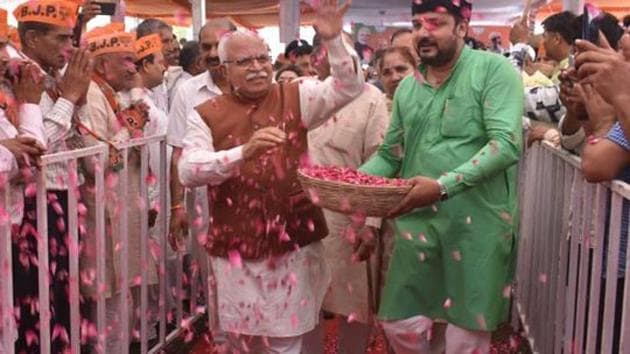How BJP challenged traditional caste arithmetic in Maharashtra, Haryana
When BJP won assembly elections in 2014, it chose chief ministers who did not come from dominant social groups in both Haryana and Maharashtra.
Elections to the legislative assemblies of Maharashtra and Haryana will be held on October 21, the Election Commission of India (ECI) announced on Saturday.

The Bharatiya Janata Party (BJP) is in government in both these states currently. And its current political dominance has to be traced back to the 2014 victory of the BJP under the leadership of Narendra Modi. It has performed consistently well in the last three major elections held in these states.
See Chart 1: BJP vote share since 2014 Lok Sabha
The BJP’s success in the two states is also a story of careful social engineering which has defied traditional caste arithmetic. When the BJP won assembly elections in 2014, it chose chief ministers who did not come from the dominant social groups in both Haryana and Maharashtra. Manohar Lal Khattar was a non-Jat chief minister of Haryana after a very long time. Similarly, Devendra Fadnavis, who is a Brahmin, was a non-Maratha chief minister in Maharashtra after a long time.
See Chart 2: Social-group wise support for UPA and NDA in 2019
Post-poll data from the 2019 National Election Study conducted by Centre for the Study of Developing Societies- (CSDS)-Lokniti shows that the BJP and its allies were ahead of the Congress-led alliance among most social groups excluding religious minorities in these states.
See Chart 3: Social composition of population
To be sure, the two poll-bound states are drastically different in terms of demography. While Scheduled Tribe (ST) voters have a 12% population share in Maharashtra, they do not even comprise 1% voters in Haryana. Haryana is also one of the states with the lowest share of Muslim population in the country. However, almost 30% of Haryana’s population belongs to Scheduled Caste (SC), compared to 17% in Maharashtra.






